- Home
- Omega acids
- Omega-3 for children
Omega-3 acids for children. Which to choose: DHA, cod liver oil or n-3-6-9?
Check whether your child needs omega-3 fatty acids.


Learn more about our editorial process
.

Learn more about our editorial process
.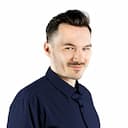

Learn more about our editorial process
.

Learn more about our editorial process
.
Why you can trust us
Articles on Natu.Care are written based on scientific research, data from government websites and other reliable sources. The texts are written in cooperation with doctors, nutritionists and other health and beauty experts. Articles are reviewed before publication and during significant updates.
.Learn more about our editorial process
.Information about advertisements
Content on Natu.Care may contain links to products from the sale of which we may receive a commission. When creating content, we adhere to high editorial standards and take care to be objective about the products discussed. The presence of affiliate links is not dictated by our partners, and we select the products we review ourselves completely independently.
.Learn more about our terms and Conditions
.Most macro- and micronutrients and nutrients should be taken by children with food. Supplementation is not usually necessary or even recommended. However, there is one exception.
Because fish consumption in Poland is still very low, many people may be deficient in omega-3 acids, which are essential for the proper functioning of the body. This also applies to children - they especially need these healthy fats.
From this article you will learn:
- What omega-3 fatty acids are and what properties they have.
- How they support the development of children.
- How they support your child's development. .
- Whether it is worth supplementing them and in what dose to give them to the youngest.
- How to choose: the classic ones and the best ones.
- What to choose: classic omega-3, cod liver oil or a mixture of omega-3-6-9. .
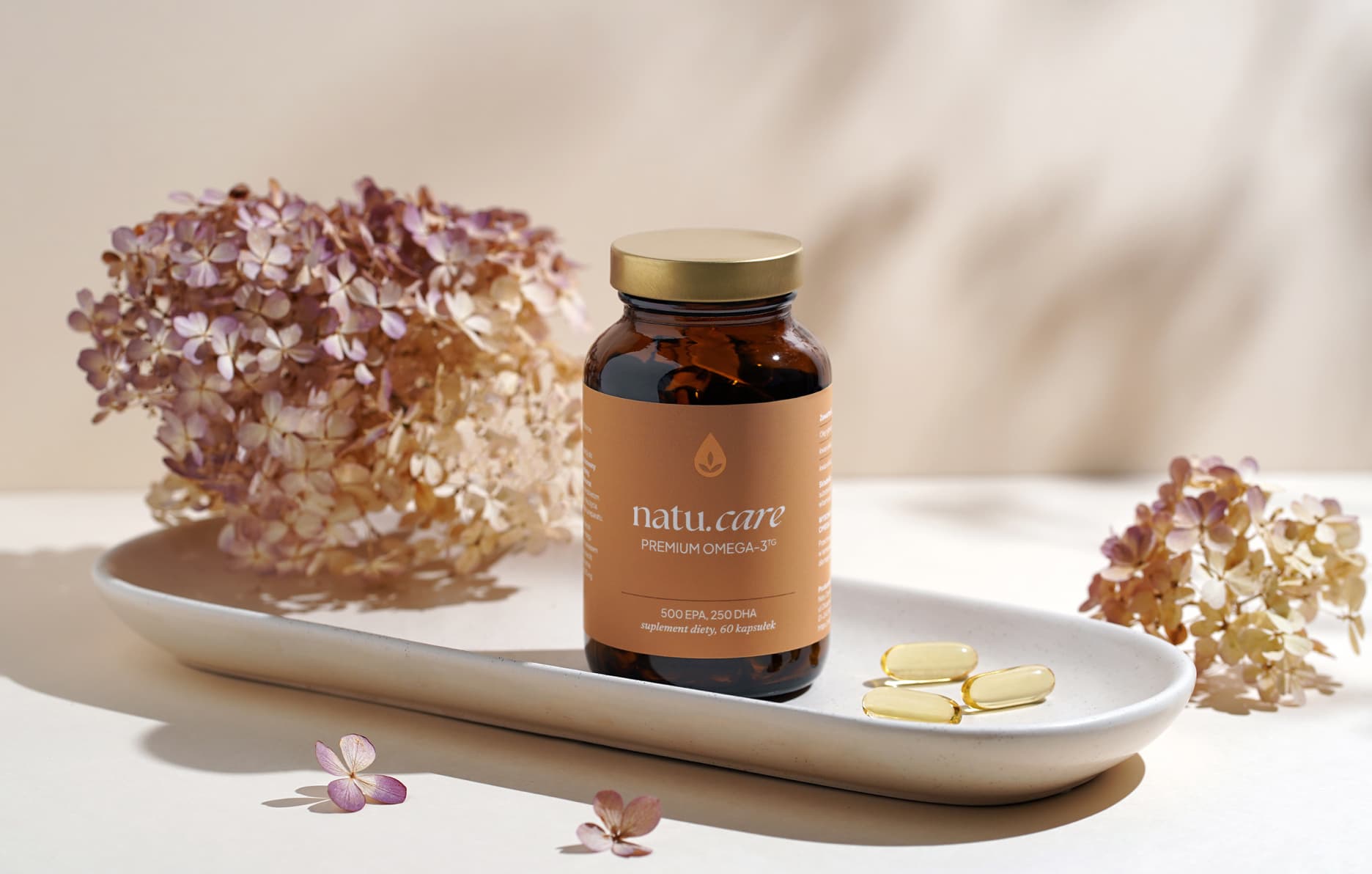
Sprawdź, za co pokochały go tysiące klientek Natu.Care Premium Omega-3ᵀᴳ -15% z kodem BLOG15
Natu.Care Omega-3ᵀᴳ Premium
Natu.Care Omega-3ᵀᴳ Premium dla zdrowia serca, mózgu i odporności. Najlepsza przyswajalność. Optymalna dawka 750 mg. Przebadana przez niezależne laboratorium.
Zobacz więcej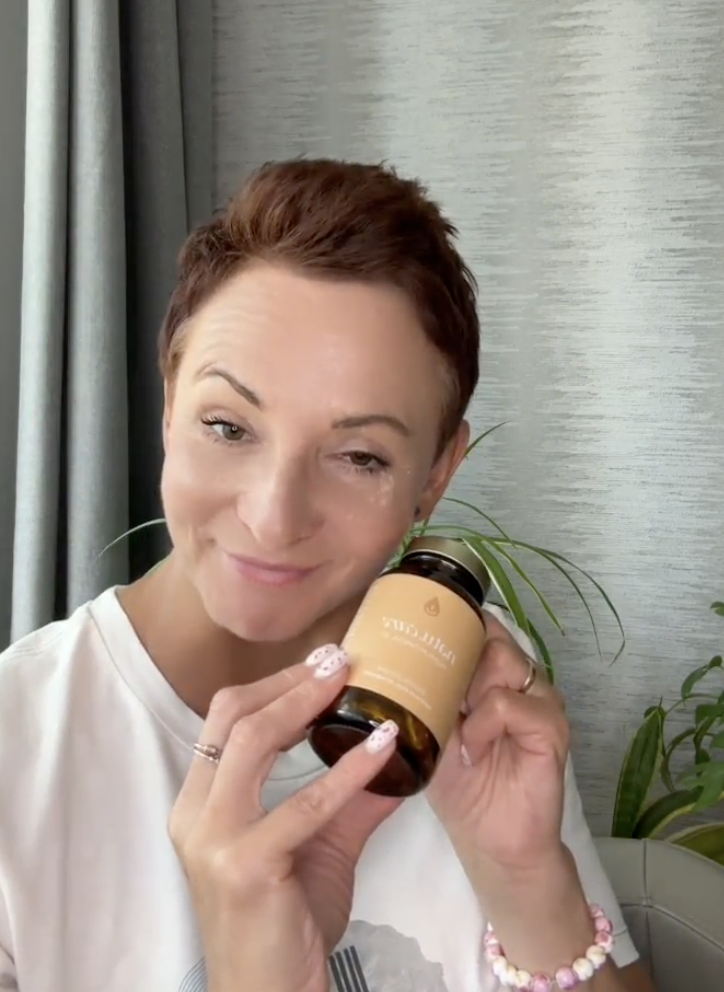
Produkt ma super skład, transparentną etykietę i co dla mnie jest ważne – małe kapsułki do połknięcia. Nie ma też nieprzyjemnego efektu odbijania rybą, który miałam spożywając inne produkty. Widzę znaczną poprawę odporności. Polecam!@Kasia P.
See also:
.- All about omega-3 fatty acids
- DHA acid for pregnant women
- EPA acid
- DHA acid
- ALA acid
- How do I choose the best omega-3? .
- Symptoms of omega-3 deficiency
- Best omega-3 supplements
- The triglycerides of omega-3 fatty acids .
What are omega-3 fatty acids?
.Omega-3 fatty acids are a group of unsaturated fatty acids that play key roles in our bodies. They are the so-called good fats, deserving of their name because of the range of health benefits they offer. Their adequate concentration in the body ensures our physical and mental healthand.
Omega-3s can be found in many foods, both animal and plant-based. However, it is important to remember that the body is unable to produce these acids on its own, so it is necessary to supply them with food.
The three main types of omega-3 fatty acids that are essential for health areand:
Omega-3 fatty acids are known for their numerous health benefits and therapeutic potential in the treatment of various conditions. They are key to the proper functioning of many systems in the body, resulting in an overall improvement in health and well-being.
Are omega-3 fatty acids necessary for your child?
.Omeega-3 fatty acids (especially DHA acid) are essential for the proper development of the brain and nervous system. They also have a great impact on the sense of vision. This is why DHA acid supplementation is recommended for both pregnant and breastfeeding womenand.
However, a baby's brain is not at all ready and fully formed after birth - in fact, it develops practically throughout life. This process is most intense in early childhoodand.
Researchers agree - omega-3 fatty acids can have a significant impact on children's psychosomatic development. They have been attributed with properties that improve concentration, memory and enhance cognitive function. They may also support visual acuityand.
Omega-3 fatty acids also support immune function, may reduce the risk of allergies and have a protective effect on the cardiovascular systemand.
Despite these optimistic assumptions, there is still a lack of hard evidence on the concrete effects of omega-3 supplementation in children. Why? Most of the studies conducted to date, have been observational studies, often lasting for several years. Over such a long period of time, it is difficult to assess the role of other factors (e.g. environmental and social) on children's development.
Additionally, the studies included different doses of omega-3 fatty acids, and to some of them the researchers raise allegations of too short a supplementation periodand. In other studies, children were given vegetable or fish oils that also contained other vitamins and minerals, making the effects inconclusively linked to omega-3 acidsand.
Nevertheless, most researchers agree that omega-3 fatty acids are crucial in central nervous system and brain development, and that their deficiency may result in lower intellectual performance.
Should children supplement omega-3 fatty acids?
.If your child loves oily fish rich in these healthy fats, he probably does not need additional supplementation. However, if his menu is dominated by chips with ketchup and corn crisps (because everything else is inedible), it's worth talking to your paediatrician about additional supplementation.
It's important to make sure that your child's omega-3s are supplemented as well.
It is important to note that children under 2 years of age should only take DHA acid -if you give it in the form of a dietary supplement or medicationand. For older children, you can give a typical blend of omega-3 fatty acids, i.e. EPA and DHA in the correct 2:1 ratio.
Important
When considering supplementation of any ingredients for your child, consult your doctor. Do not give your child any preparations on your own.
When choosing omega-3 fatty acids for children, the form of administration is also important. The youngest often have problems swallowing tablets and for them liquid preparations will work well. You can also opt for capsules, which can be easily opened and their contents administered directly into the child's mouth.
.Product description
The dietary supplement contains omega-3ᵀᴳ, or omega-3 acids in the form of trójglyceridesów. Scientific studies suggest that this form of fatty acidsós up to 2 times better absorbed than the estersós present in many dietary supplements on the market. This means that you are assured of their effectiveness and of supplying yourself with valuable omega acids.
Fatty acids omega-3 are derived from wild anchovy oil. It is a rich source of healthy fats that are essential for the health of the cardiovascular, immune and nervous systems, as well as the proper function of vision, joints muscles.
Scientific research suggests that wild anchovies are a good source of healthy fats.
Scientific research also suggests that an adequate intake of omega-3 fatty acidsós protects against and supports the treatment of depression and anxiety disorders. In addition, omega-3s influence the hydration and appearance of the skinóry and support healthy sleep.
.
The formula contains a total of 750 mg of EPA+DHA acidsós, which is three times higher than the recommended minimum of 250 mg for the Polish population. Omega-3 TG Premium has studies indicating that its TOTOX is 9, which is a very good result.
Supplementation of omega-3 fatty acidsóis recommended for anyone who does not eat 1–2 portions (approximately 300 g) of oily fish per week. Children during growth, seniors, physically active people, vegans and vegetarians, as well as patients undergoing cardiovascular treatment and prevention of heart disease also have an increased need.
Pros and cons
The dietary supplement contains omega-3ᵀᴳ, or omega-3 acids in the form of trójglyceridesów. Scientific studies suggest that this form of fatty acidsós up to 2 times better absorbed than the estersós present in many dietary supplements on the market. This means that you are assured of their effectiveness and of supplying yourself with valuable omega acids.
Fatty acids omega-3 are derived from wild anchovy oil. It is a rich source of healthy fats that are essential for the health of the cardiovascular, immune and nervous systems, as well as the proper function of vision, joints muscles.
Scientific research suggests that wild anchovies are a good source of healthy fats.
Scientific research also suggests that an adequate intake of omega-3 fatty acidsós protects against and supports the treatment of depression and anxiety disorders. In addition, omega-3s influence the hydration and appearance of the skinóry and support healthy sleep.
.
The formula contains a total of 750 mg of EPA+DHA acidsós, which is three times higher than the recommended minimum of 250 mg for the Polish population. Omega-3 TG Premium has studies indicating that its TOTOX is 9, which is a very good result.
Supplementation of omega-3 fatty acidsóis recommended for anyone who does not eat 1–2 portions (approximately 300 g) of oily fish per week. Children during growth, seniors, physically active people, vegans and vegetarians, as well as patients undergoing cardiovascular treatment and prevention of heart disease also have an increased need.
Additional information
The dietary supplement contains omega-3ᵀᴳ, or omega-3 acids in the form of trójglyceridesów. Scientific studies suggest that this form of fatty acidsós up to 2 times better absorbed than the estersós present in many dietary supplements on the market. This means that you are assured of their effectiveness and of supplying yourself with valuable omega acids.
Fatty acids omega-3 are derived from wild anchovy oil. It is a rich source of healthy fats that are essential for the health of the cardiovascular, immune and nervous systems, as well as the proper function of vision, joints muscles.
Scientific research suggests that wild anchovies are a good source of healthy fats.
Scientific research also suggests that an adequate intake of omega-3 fatty acidsós protects against and supports the treatment of depression and anxiety disorders. In addition, omega-3s influence the hydration and appearance of the skinóry and support healthy sleep.
.
The formula contains a total of 750 mg of EPA+DHA acidsós, which is three times higher than the recommended minimum of 250 mg for the Polish population. Omega-3 TG Premium has studies indicating that its TOTOX is 9, which is a very good result.
Supplementation of omega-3 fatty acidsóis recommended for anyone who does not eat 1–2 portions (approximately 300 g) of oily fish per week. Children during growth, seniors, physically active people, vegans and vegetarians, as well as patients undergoing cardiovascular treatment and prevention of heart disease also have an increased need.
Expert opinion
The dietary supplement contains omega-3ᵀᴳ, or omega-3 acids in the form of trójglyceridesów. Scientific studies suggest that this form of fatty acidsós up to 2 times better absorbed than the estersós present in many dietary supplements on the market. This means that you are assured of their effectiveness and of supplying yourself with valuable omega acids.
Fatty acids omega-3 are derived from wild anchovy oil. It is a rich source of healthy fats that are essential for the health of the cardiovascular, immune and nervous systems, as well as the proper function of vision, joints muscles.
Scientific research suggests that wild anchovies are a good source of healthy fats.
Scientific research also suggests that an adequate intake of omega-3 fatty acidsós protects against and supports the treatment of depression and anxiety disorders. In addition, omega-3s influence the hydration and appearance of the skinóry and support healthy sleep.
.
The formula contains a total of 750 mg of EPA+DHA acidsós, which is three times higher than the recommended minimum of 250 mg for the Polish population. Omega-3 TG Premium has studies indicating that its TOTOX is 9, which is a very good result.
Supplementation of omega-3 fatty acidsóis recommended for anyone who does not eat 1–2 portions (approximately 300 g) of oily fish per week. Children during growth, seniors, physically active people, vegans and vegetarians, as well as patients undergoing cardiovascular treatment and prevention of heart disease also have an increased need.
Product description
The dietary supplement contains high-quality fatty acids omega-3 from anchovy oil. It is a naturally rich source of healthy fats that are essential for cardiovascular, immune and nervous system health, as well as proper function of eyesight, joints muscles.
Scientific research also suggests that an adequate intake of omega-3 fatty acidsós protects against and supports the treatment of depression and anxiety disorders. In addition, omega-3s influence the hydration and appearance of the skinóry and support healthy sleep.
.
The dietary supplement contains 550 mg EPA+DHA per daily serving. This is more than double the official recommendations for the Polish population, whichóre suggesting an intake of at least 250 mg per day.
Supplementation of EPA+DHA is a good way to support healthy sleep.
Supplementation with omega-3 fatty acidsós is advisable if you do not consume 1–2 portions (approx. 300 g) of oily fish per week. There is also an increased need for physically active people, vegans and vegetarians, seniors, children during growth spurts and patients undergoing cardiovascular treatment and prevention of heart disease.
Pros and cons
The dietary supplement contains high-quality fatty acids omega-3 from anchovy oil. It is a naturally rich source of healthy fats that are essential for cardiovascular, immune and nervous system health, as well as proper function of eyesight, joints muscles.
Scientific research also suggests that an adequate intake of omega-3 fatty acidsós protects against and supports the treatment of depression and anxiety disorders. In addition, omega-3s influence the hydration and appearance of the skinóry and support healthy sleep.
.
The dietary supplement contains 550 mg EPA+DHA per daily serving. This is more than double the official recommendations for the Polish population, whichóre suggesting an intake of at least 250 mg per day.
Supplementation of EPA+DHA is a good way to support healthy sleep.
Supplementation with omega-3 fatty acidsós is advisable if you do not consume 1–2 portions (approx. 300 g) of oily fish per week. There is also an increased need for physically active people, vegans and vegetarians, seniors, children during growth spurts and patients undergoing cardiovascular treatment and prevention of heart disease.
Additional information
The dietary supplement contains high-quality fatty acids omega-3 from anchovy oil. It is a naturally rich source of healthy fats that are essential for cardiovascular, immune and nervous system health, as well as proper function of eyesight, joints muscles.
Scientific research also suggests that an adequate intake of omega-3 fatty acidsós protects against and supports the treatment of depression and anxiety disorders. In addition, omega-3s influence the hydration and appearance of the skinóry and support healthy sleep.
.
The dietary supplement contains 550 mg EPA+DHA per daily serving. This is more than double the official recommendations for the Polish population, whichóre suggesting an intake of at least 250 mg per day.
Supplementation of EPA+DHA is a good way to support healthy sleep.
Supplementation with omega-3 fatty acidsós is advisable if you do not consume 1–2 portions (approx. 300 g) of oily fish per week. There is also an increased need for physically active people, vegans and vegetarians, seniors, children during growth spurts and patients undergoing cardiovascular treatment and prevention of heart disease.
Expert opinion
The dietary supplement contains high-quality fatty acids omega-3 from anchovy oil. It is a naturally rich source of healthy fats that are essential for cardiovascular, immune and nervous system health, as well as proper function of eyesight, joints muscles.
Scientific research also suggests that an adequate intake of omega-3 fatty acidsós protects against and supports the treatment of depression and anxiety disorders. In addition, omega-3s influence the hydration and appearance of the skinóry and support healthy sleep.
.
The dietary supplement contains 550 mg EPA+DHA per daily serving. This is more than double the official recommendations for the Polish population, whichóre suggesting an intake of at least 250 mg per day.
Supplementation of EPA+DHA is a good way to support healthy sleep.
Supplementation with omega-3 fatty acidsós is advisable if you do not consume 1–2 portions (approx. 300 g) of oily fish per week. There is also an increased need for physically active people, vegans and vegetarians, seniors, children during growth spurts and patients undergoing cardiovascular treatment and prevention of heart disease.
ALLNUTRITION Omega 3 Strong
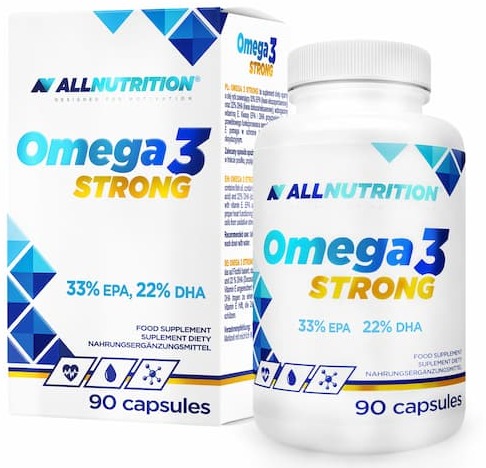
- Content omega-3 acids: 550 mg (DHA 220 mg + EPA 330 mg)
- Additional active ingredients: vitamin E
- Form: capsules .
- Dose: 1 capsule per day .
- Sufficient for: 90 days .
Product description
A dietary supplement with a solid portion of DHA and EPA – valuable for health and well-being omega-3 acidsós. Indicated especially for people on a plant-based diet, physically active people and seniors.
.The sourceóof omega-3 acids in this preparation is fish oil.
.Pros and cons
A dietary supplement with a solid portion of DHA and EPA – valuable for health and well-being omega-3 acidsós. Indicated especially for people on a plant-based diet, physically active people and seniors.
.The sourceóof omega-3 acids in this preparation is fish oil.
.Additional information
A dietary supplement with a solid portion of DHA and EPA – valuable for health and well-being omega-3 acidsós. Indicated especially for people on a plant-based diet, physically active people and seniors.
.The sourceóof omega-3 acids in this preparation is fish oil.
.User review
A dietary supplement with a solid portion of DHA and EPA – valuable for health and well-being omega-3 acidsós. Indicated especially for people on a plant-based diet, physically active people and seniors.
.The sourceóof omega-3 acids in this preparation is fish oil.
.Solgar Omega 3-6-9

- Content of omega acids:.
- Omega-3 fatty acids.
- Omega-3 fatty acids
- alpha-linolenic acid (ALA) – 585 mg
.- eicosapentaenoic acid (EPA) – 344 mg
- docosahexaenoic acid (DHA) – 221 mg
.
- Omega-3 fatty acids
- Omega-6 fatty acids.
- linoleic acid (LA) – 598 mg .
- gamma-linolenic acid (GLA) – 274 mg .
- Omega-9 fatty acids.
- Oleic acid – 325 mg .
- Omega-3 fatty acids.
- Source of omega acids: fish oil from anchovies, mackerel, sardines, linseed oil, cucumber oil .
- Form: capsules .
- Packaging: 60 capsules .
- Daily allowance:3 capsules per day .
- Sufficient for: 20 days .
Product description
A combination of omega 3-6-9 fatty acidsós derived from fish and plants. The dietary supplement supplements essential omega fatty acids, whichóre needed for the proper functioning of many systemsóorgansóin the body.
Pros and cons
A combination of omega 3-6-9 fatty acidsós derived from fish and plants. The dietary supplement supplements essential omega fatty acids, whichóre needed for the proper functioning of many systemsóorgansóin the body.
Additional information
A combination of omega 3-6-9 fatty acidsós derived from fish and plants. The dietary supplement supplements essential omega fatty acids, whichóre needed for the proper functioning of many systemsóorgansóin the body.
A combination of omega 3-6-9 fatty acidsós derived from fish and plants. The dietary supplement supplements essential omega fatty acids, whichóre needed for the proper functioning of many systemsóorgansóin the body.
Omega + Vitamin D3 800 IU for children

- Content of omega-3 fatty acids: 300 mg (180 mg EPA + 120 mg DHA)
- .
- Additional active ingredients: vitamin D3
- Form: twist-off capsules
- .
- Dose: 1 capsule per day
- .
- Sufficient for: 60 days
- .
Product description
Omega-3 acids for children with added vitamin D3 in good doses. The formula fills the daily requirement of EPA and DHA and vitamin D for children aged 2–18 years.
The Ministry of Health recommends supplementation with vitamin D3. In turn, omega-3 fatty acids are also crucial for the youngest.
The dietary supplement from Aura Herbals supports mós brain function, proper vision and immune system function.
The omega-3 fatty acids are derived from fish oil sourced from anchovies.
Pros and cons
Omega-3 acids for children with added vitamin D3 in good doses. The formula fills the daily requirement of EPA and DHA and vitamin D for children aged 2–18 years.
The Ministry of Health recommends supplementation with vitamin D3. In turn, omega-3 fatty acids are also crucial for the youngest.
The dietary supplement from Aura Herbals supports mós brain function, proper vision and immune system function.
The omega-3 fatty acids are derived from fish oil sourced from anchovies.
Additional information
Omega-3 acids for children with added vitamin D3 in good doses. The formula fills the daily requirement of EPA and DHA and vitamin D for children aged 2–18 years.
The Ministry of Health recommends supplementation with vitamin D3. In turn, omega-3 fatty acids are also crucial for the youngest.
The dietary supplement from Aura Herbals supports mós brain function, proper vision and immune system function.
The omega-3 fatty acids are derived from fish oil sourced from anchovies.
User review
Omega-3 acids for children with added vitamin D3 in good doses. The formula fills the daily requirement of EPA and DHA and vitamin D for children aged 2–18 years.
The Ministry of Health recommends supplementation with vitamin D3. In turn, omega-3 fatty acids are also crucial for the youngest.
The dietary supplement from Aura Herbals supports mós brain function, proper vision and immune system function.
The omega-3 fatty acids are derived from fish oil sourced from anchovies.
DHA acid for infants
.Infants up to 6 months of age take DHA acid exclusively with breast milk (or replacement milk). If you are breastfeeding, experts recommend you takeand:
- 200 mg DHA acid - if you eat oily fish at least 1-2 times a week, .
- 400 mg DHA acid - if your diet is not rich in oily fish. .
What's better: omega-3 or cod liver oil?
.Tran is a traditional dietary supplement that is a great source of omega-3s. In addition to these, it also contains vitamins A and D. It is derived from cod liver and is available in liquid or capsule form.
If you are already giving your child other vitamins, cod liver oil may not be the best idea as you may exceed the maximum daily servings of vitamins A and D.
Both supplements, omega-3 and cod liver oil, have their unique benefits. Omega-3 is more versatile and available in different forms, while cod liver oil offers the added benefit of vitamins A and D. Choosing between the two depends on your individual needs.
And how about omega-3-6-9?
.Since these omega so cool, why not take them all? Well, because it's not about quantity, it's about the right proportions.
Begin, however, with the fact that the body can produce omega-9 acids in the amount needed on its own, so supplementation with them is not necessaryand.
.As far as the other two are concerned, according to the latest medical knowledge, the proper functioning of the body is ensured by the right ratio of omega-3 to omega-6 acids. This should be between 1:1 and 1:4. Meanwhile, in the diet of the average person living in highly developed countries, this ratio can be disturbed and be as high as 1:17and!
All because omega-6 fatty acids are found in most processed foods (you'll even find them in chips and fast food) . And if that's the case, you definitely don't need them in a dietary supplement yet.
An excessively high supply of omega-6 will lead to reduced absorption of omega-3, as these acids compete for the same metabolic pathways..
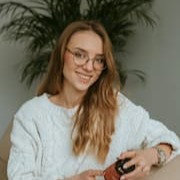 .
.
Julia SkrajdaDietitian
.Dosage of omega-3 for children
. .|
Age of child . |
Recommended daily allowance . |
|
7-24 months |
100 mg DHA acid |
|
children over 2 years of age |
250 mg of EPA and DHA acids |
Additionally, the intake of ALA acids should be about 0.5% of the kcal that a child assimilates from fatsand.
Omega-3 for children: contraindications
.Omega-3 acids are a safe dietary supplement; however, like any active substance, they can interact with certain preparations and medicines. Likewise, omega-3 fatty acids can be overdosed due to improper supplementation (although this is rare)and.
If your child is taking any medication or other preparations (even if herbal), always consult your paediatrician to start supplementation. To take omega-3 fatty acids safely, follow your doctor's recommendations or the manufacturer's guidelines for daily doses.

Sprawdź, za co pokochały go tysiące klientek Natu.Care Premium Omega-3ᵀᴳ -15% z kodem BLOG15
Natu.Care Omega-3ᵀᴳ Premium
Natu.Care Omega-3ᵀᴳ Premium dla zdrowia serca, mózgu i odporności. Najlepsza przyswajalność. Optymalna dawka 750 mg. Przebadana przez niezależne laboratorium.
Zobacz więcej
Produkt ma super skład, transparentną etykietę i co dla mnie jest ważne – małe kapsułki do połknięcia. Nie ma też nieprzyjemnego efektu odbijania rybą, który miałam spożywając inne produkty. Widzę znaczną poprawę odporności. Polecam!@Kasia P.
See also:
.- Best sources of omega-3 in the diet
- Omega-3 in an athlete's diet
- DHA+EPA, what do they give? .
- Omega drug, not a supplement .
- The properties of omega-6 fatty acids .
- Properties of omega-9 fatty acids
- Properties of omega-3-6-9 acids .
Summary
.- Omega-3 fatty acids are polyunsaturated fatty acids, which are essential for the normal development of the brain, nervous system and vision in children.
- They are also essential for the development of the brain, nervous system and vision in children.
- Experts recommend the intake of omega-3 fatty acids in pregnant and breastfeeding women, and in children during periods of intensive growth.
- The following is a recommendation.
- For the proper functioning of the body, the ratio of omega acids from groups 3, 6 and 9 is important.
- Deficiencies usually only concern omega-3 fatty acids, and it is these that are worth supplementing. A good source of these is cod liver oil.
- Before giving your child any supplement, consult your paediatrician. .
FAQ
.Can children take omega-3?
.Yes, children can and should take omega-3. Give them oily fish rich in these acids, such as salmon, mackerel or sardines, at least twice a week. If your child does not eat fish, consider supplementation with omega-3 fatty acids.
Choose supplements designed for children that are tailored to their needs. Omega-3s are crucial for brain development and function, as well as heart health. However, be careful about dosage - too much omega-3 can lead to health problems. Always consult your doctor or nutritionist before starting supplementation.
How much omega-3 for a 2-year-old child?
.Children under 2 years of age are recommended to take only one of the group of omega-3 acids - DHA acid. The youngest should consume 100 mg of DHA per day. Children over 24 months of age can take omega-3 acids in a daily dose of 250 mg.
.Can omega-3 be taken daily?
.Yes, you can take omega-3 daily. Omega-3 fatty acids, especially EPA and DHA, are essential for heart, brain and immune system health. For example, taking omega-3s daily can reduce the risk of heart disease by lowering LDL cholesterol and raising HDL cholesterol.
Omega-3 also supports brain health, which is particularly important in older people. The recommended dose of omega-3 is 250 mg EPA and DHA per day for healthy adults.
What time of day to take omega-3?
.The time of day you take supplements with omega-3 does not matter. However, it is worth taking them during meals, preferably those rich in fats. The fats in the food help the omega-3 fatty acids to be absorbed into the body even better.
This method of supplementation ensures maximum health benefits from omega-3, such as improved heart, brain and immune system health.
What vegetables contain omega-3?
.Omega-3 fatty acids can mainly be found in green leafy vegetables such as spinach, lamb's lettuce, rocket or kale. You can use them as a base for salads. However, it is not vegetables that are the richest sources of plant-based omega-3s, but flaxseed.
.You can add them to salads, muesli or smoothies. Enrich your diet diet with walnuts too, which are an excellent source of omega-3. Remember that plants are a good source of ALA acid, and you need to consume DHA and EPA from oily fish.
These are the best sources of omega-3.
Is it worth giving children cod liver oil?
.Yes, it is worthwhile. Tran is a rich source of omega-3 acids, which are crucial for brain and eye development. It also provides vitamin D, essential for healthy bones and teeth. Tranium is also a source of vitamin A, which supports vision and the immune system.
Give tranium to children, but pay attention to dosage - too much omega-3 fatty acids and vitamins A and D can be harmful.
Does omega-3 supplementation make sense?
.Supplementation omega-3 makes sense, especially when the diet is low in polyunsaturated fats. Omega-3 supports brain function, strengthens the immune system and helps maintain a healthy heart.
Start by enriching your diet with foods rich in omega-3: oily fish (salmon, sardines), nuts, flaxseed, chia. If these are insufficient, consider supplementation. Choose supplements with certifications and testing, confirming the purity of the formulation and the quality of the product. An example of high-quality omega-3 fatty acids is Natu.Care Premium Omega-3 TG.
Sources
.See all
.Blanchard, L. B., & McCarter, G. C. (2015). Insomnia and exacerbation of anxiety associated with high-EPA fish oil supplements after successful treatment of depression. Oxford Medical Case Reports, 2015(3), 244-245. https://doi.org/10.1093/omcr/omv024
Fatty Acids-An overview | ScienceDirect Topics. (n.d.). Retrieved 9 March 2023, from https://www.sciencedirect.com/topics/earth-and-planetary-sciences/fatty-acids
Innes, J. K., & Calder, P. C. (2018). Omega-6 fatty acids and inflammation. Prostaglandins, Leukotrienes and Essential Fatty Acids, 132, 41-48. https://doi.org/10.1016/j.plefa.2018.03.004
Johnson, M. (2014). Omega-3, Omega-6 and Omega-9 Fatty Acids: Implications for Cardiovascular and Other Diseases. Journal of Glycomics & Lipidomics, 04(04). https://doi.org/10.4172/2153-0637.1000123
Nguyen, H. T., Park, H., Koster, K. L., Cahoon, R. E., Nguyen, H. T. M., Shanklin, J., Clemente, T. E., & Cahoon, E. B. (2015). Redirection of metabolic flux for high levels of omega-7 monounsaturated fatty acid accumulation in camelina seeds. Plant Biotechnology Journal, 13(1), 38-50. https://doi.org/10.1111/pbi.12233
Schmidt, E. B., & Dyerberg, J. (1994). Omega-3 Fatty Acids. Drugs, 47(3), 405–424. https://doi.org/10.2165/00003495-199447030-00003
Helland, I. B., Smith, L., Saarem, K., Saugstad, O. D., & Drevon, C. A. (2003). Maternal supplementation with very-long-chain n-3 fatty acids during pregnancy and lactation augments children's IQ at 4 years of age. Pediatrics, 111(1), e39-44. https://doi.org/10.1542/peds.111.1.e39
Farag, M. A., & Gad, M. Z. (2022). Omega-9 fatty acids: Potential roles in inflammation and cancer management. Journal of Genetic Engineering and Biotechnology, 20(1), 48. https://doi.org/10.1186/s43141-022-00329-0
Medeiros-de-Moraes, I. M., Gonçalves-de-Albuquerque, C. F., Kurz, A. R. M., Oliveira, F. M. de J., Abreu, V. H. P. de, Torres, R. C., Carvalho, V. F., Estato, V., Bozza, P. T., Sperandio, M., Castro-Faria-Neto, H. C. de, & Silva, A. R. (2018). Omega-9 Oleic Acid, the Main Compound of Olive Oil, Mitigates Inflammation during Experimental Sepsis. Oxidative Medicine and Cellular Longevity, 2018, e6053492. https://doi.org/10.1155/2018/6053492
Campoy, C., Escolano-Margarit, M. V., Anjos, T., Szajewska, H., & Uauy, R. (2012). Omega 3 fatty acids on child growth, visual acuity and neurodevelopment. British Journal of Nutrition, 107(S2), S85-S106. https://doi.org/10.1017/S0007114512001493
Diana, F. M., & Fitria, N. (2022). Association of Omega 3 and Omega 6 and Child Development: A Systematic Review. Nutrición Clínica y Dietética Hospitalaria, 42(2), Article 2. https://doi.org/10.12873/422fivi
González, F. E., & Báez, R. V. (2017). IN TIME: IMPORTÂNCIA DOS ÔMEGA 3 NA NUTRIÇÃO INFANTIL. Revista Paulista de Pediatria, 35, 03-04. https://doi.org/10.1590/1984-0462/;2017;35;1;00018
Nevins, J. E. H., Donovan, S. M., Snetselaar, L., Dewey, K. G., Novotny, R., Stang, J., Taveras, E. M., Kleinman, R. E., Bailey, R. L., Raghavan, R., Scinto-Madonich, S. R., Venkatramanan, S., Butera, G., Terry, N., Altman, J., Adler, M., Obbagy, J. E., Stoody, E. E., & de Jesus, J. (2021). Omega-3 Fatty Acid Dietary Supplements Consumed During Pregnancy and Lactation and Child Neurodevelopment: A Systematic Review. The Journal of Nutrition, 151(11), 3483-3494. https://doi.org/10.1093/jn/nxab238
Osendarp, S. J. (2011). The role of omega-3 fatty acids in child development. Oléagineux, Corps Gras, Lipides, 18(6), Article 6. https://doi.org/10.1051/ocl.2011.0417
Roach, L. A., Byrne, M. K., Howard, S. J., Johnstone, S. J., Batterham, M., Wright, I. M. R., Okely, A. D., de Groot, R. H. M., van der Wurff, I. S. M., Jones, A. L., & Meyer, B. J. (2021). Effect of Omega-3 Supplementation on Self-Regulation in Typically Developing Preschool-Aged Children: Results of the Omega Kid Pilot Study-A Randomised, Double-Blind, Placebo-Controlled Trial. Nutrients, 13(10), Article 10. https://doi.org/10.3390/nu13103561
Sherzai, D., Moness, R., Sherzai, S., & Sherzai, A. (2023). A Systematic Review of Omega-3 Fatty Acid Consumption and Cognitive Outcomes in Neurodevelopment. American Journal of Lifestyle Medicine, 17(5), 649-685. https://doi.org/10.1177/15598276221116052
Wawryszuk, N. (2023). Omega acids. Everything you need to know (B. Turczynski, Ed.; 1st ed.). Natu.Care. https://books.google.com/books?vid=9788396887818
Editorials
Meet the team


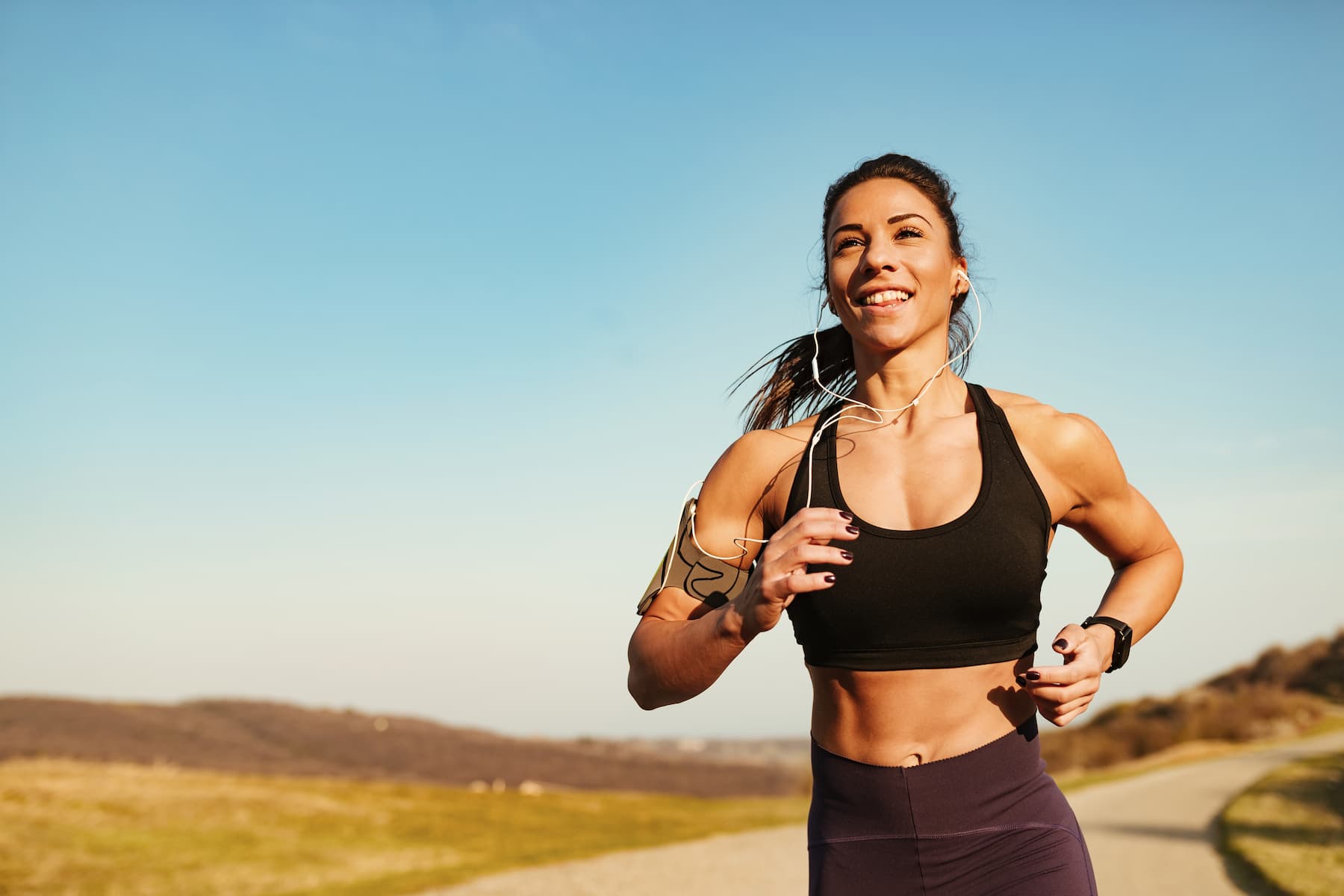
Omega-3 fatty acids are a useful dietary supplement for active people - improves performance and fitness.
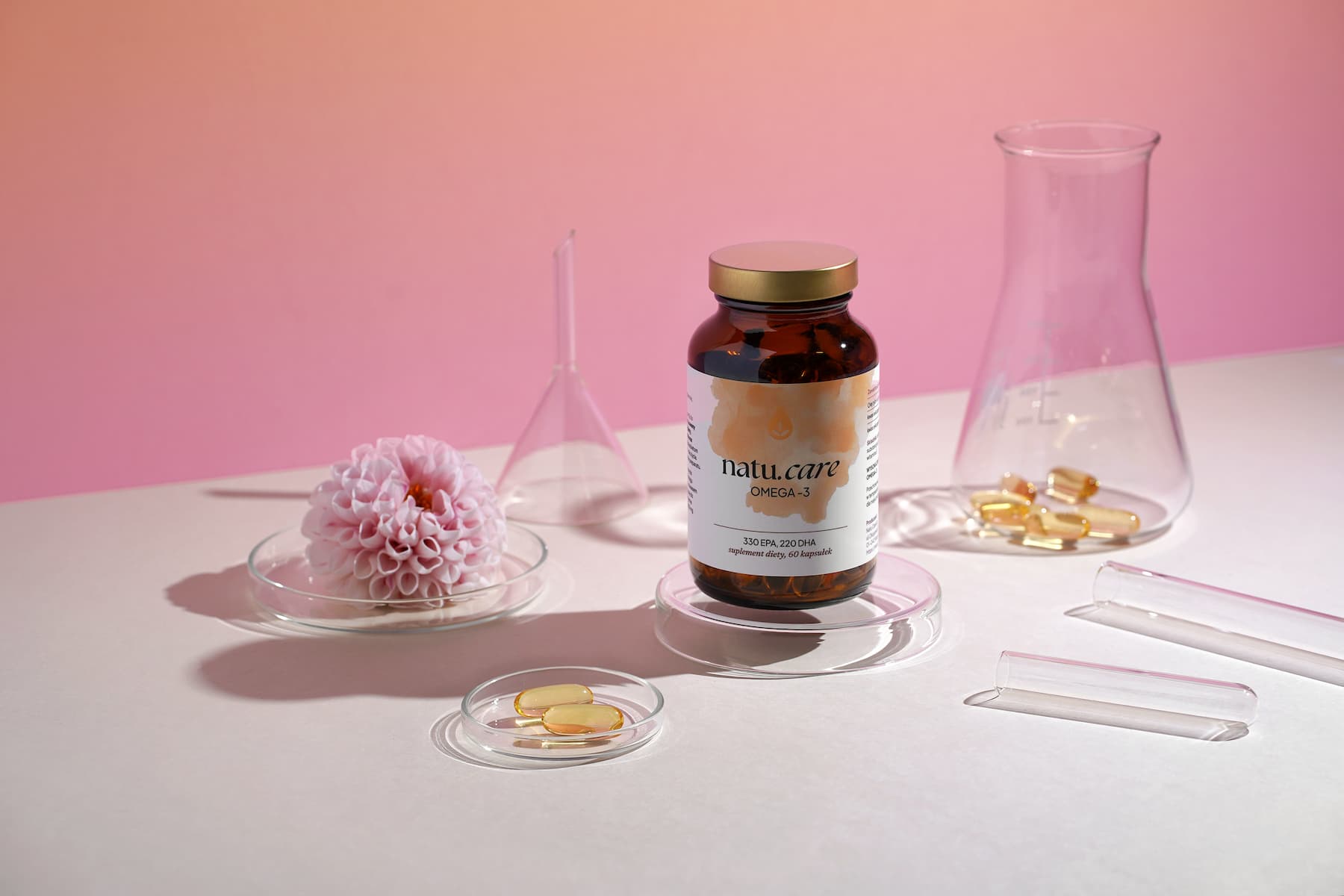
Omega-3 in a good dose and an optimum ratio of DHA and EPA acids will replenish valuable fats in the diet.
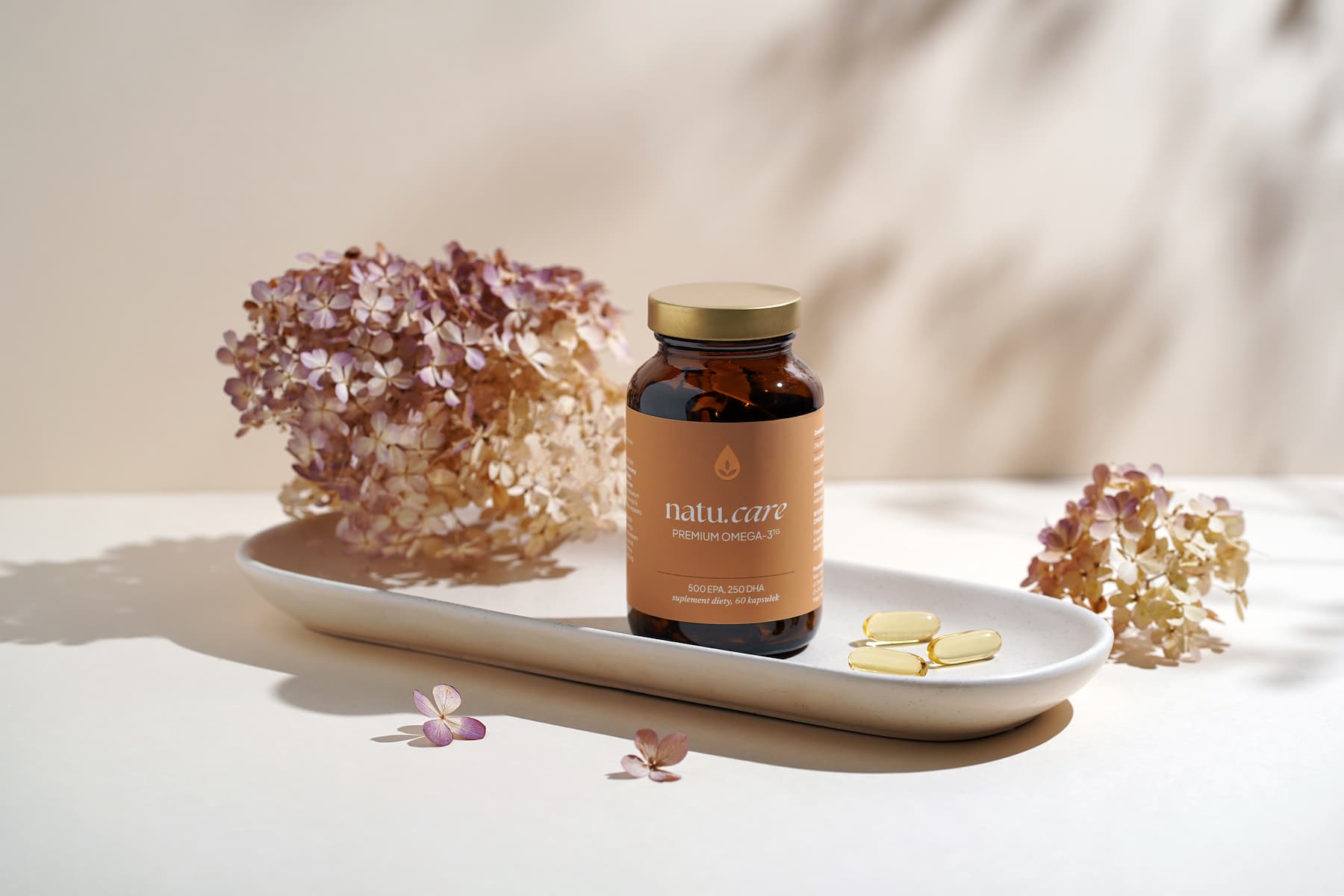
The omega-3 acids from Natu.Care are distinguished by their triglyceride form, which is characterised by high bioavailability.


